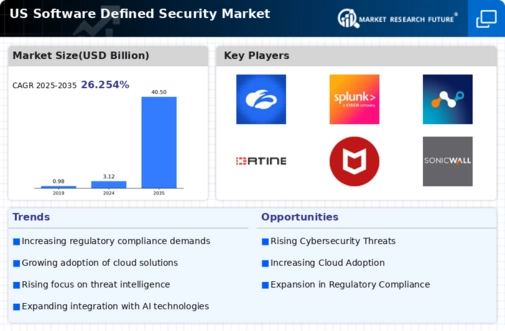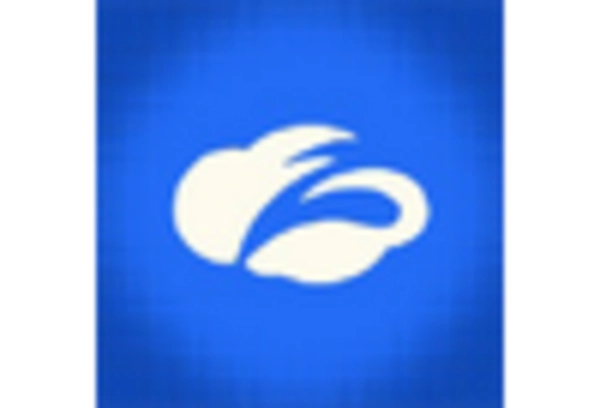The software defined-security market is currently characterized by a dynamic competitive landscape, driven by rapid technological advancements and an increasing demand for integrated security solutions. Major players such as Palo Alto Networks (US), Fortinet (US), and Cisco Systems (US) are at the forefront, each adopting distinct strategies to enhance their market positioning. Palo Alto Networks (US) emphasizes innovation through continuous product development, focusing on AI-driven security solutions that adapt to evolving threats. Fortinet (US), on the other hand, leverages its extensive portfolio of security appliances and services, aiming for comprehensive coverage across various sectors. Cisco Systems (US) is strategically investing in partnerships and acquisitions to bolster its security offerings, particularly in cloud security, which is becoming increasingly critical in the current digital landscape. Collectively, these strategies contribute to a competitive environment that is both collaborative and adversarial, as companies seek to differentiate themselves while also addressing shared challenges in cybersecurity.
In terms of business tactics, companies are increasingly localizing their operations to enhance responsiveness to regional market demands. This approach not only optimizes supply chains but also allows for tailored solutions that meet specific regulatory requirements. The market structure appears moderately fragmented, with a mix of established players and emerging startups, each vying for market share. The collective influence of key players is significant, as they set industry standards and drive innovation, thereby shaping the overall market dynamics.
In October 2025, Palo Alto Networks (US) announced a strategic partnership with a leading cloud service provider to enhance its security offerings for cloud environments. This collaboration is expected to integrate advanced threat detection capabilities into the cloud provider's infrastructure, thereby expanding Palo Alto's reach and reinforcing its position as a leader in cloud security solutions. The strategic importance of this partnership lies in its potential to address the growing concerns around cloud security, which is paramount for organizations migrating to cloud-based operations.
In September 2025, Fortinet (US) launched a new line of security appliances designed specifically for small to medium-sized enterprises (SMEs). This move is indicative of Fortinet's strategy to penetrate underserved market segments, providing robust security solutions that are both affordable and scalable. The introduction of these appliances is likely to enhance Fortinet's market share among SMEs, a sector that is increasingly targeted by cyber threats but often lacks the resources for comprehensive security measures.
In August 2025, Cisco Systems (US) completed the acquisition of a cybersecurity startup specializing in AI-driven threat intelligence. This acquisition is poised to enhance Cisco's existing security portfolio by integrating cutting-edge AI capabilities, thereby improving its threat detection and response times. The strategic significance of this acquisition lies in Cisco's commitment to staying ahead of the curve in an increasingly competitive market, where AI integration is becoming a critical differentiator.
As of November 2025, the competitive trends in the software defined-security market are heavily influenced by digitalization, sustainability, and the integration of AI technologies. Strategic alliances are increasingly shaping the landscape, as companies recognize the value of collaboration in addressing complex security challenges. Looking ahead, competitive differentiation is likely to evolve, with a pronounced shift from price-based competition to a focus on innovation, technological advancement, and supply chain reliability. This transition underscores the necessity for companies to not only offer competitive pricing but also to deliver superior value through advanced security solutions.

















Leave a Comment